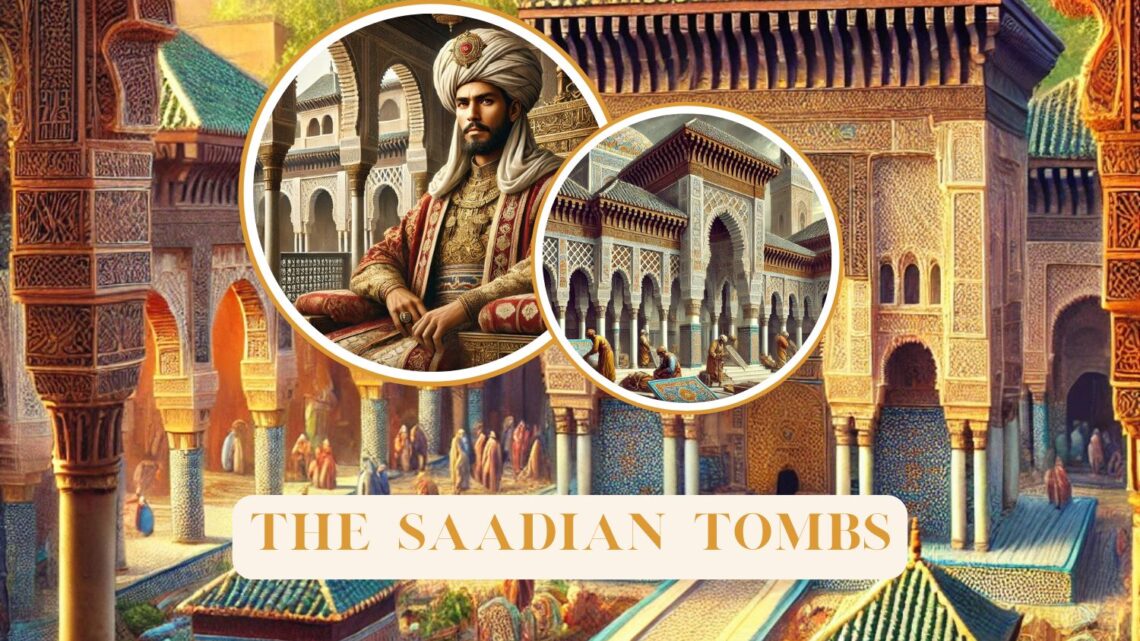
The Saadian Tombs, located in Marrakech, are one of Morocco’s most significant historical sites. They stand as a testament to the grandeur of the Saadian dynasty (1549-1659), a period marked by architectural innovation and artistic splendor. Rediscovered in 1917, after being hidden for centuries, the tombs have become a major attraction for visitors to the city. These tombs offer insight into Moroccan art, architecture, and history, reflecting the Saadian dynasty’s influence on the cultural landscape of Morocco.
This article will explore the history of the Saadian Tombs, their architectural significance, key figures buried within, and their rediscovery.
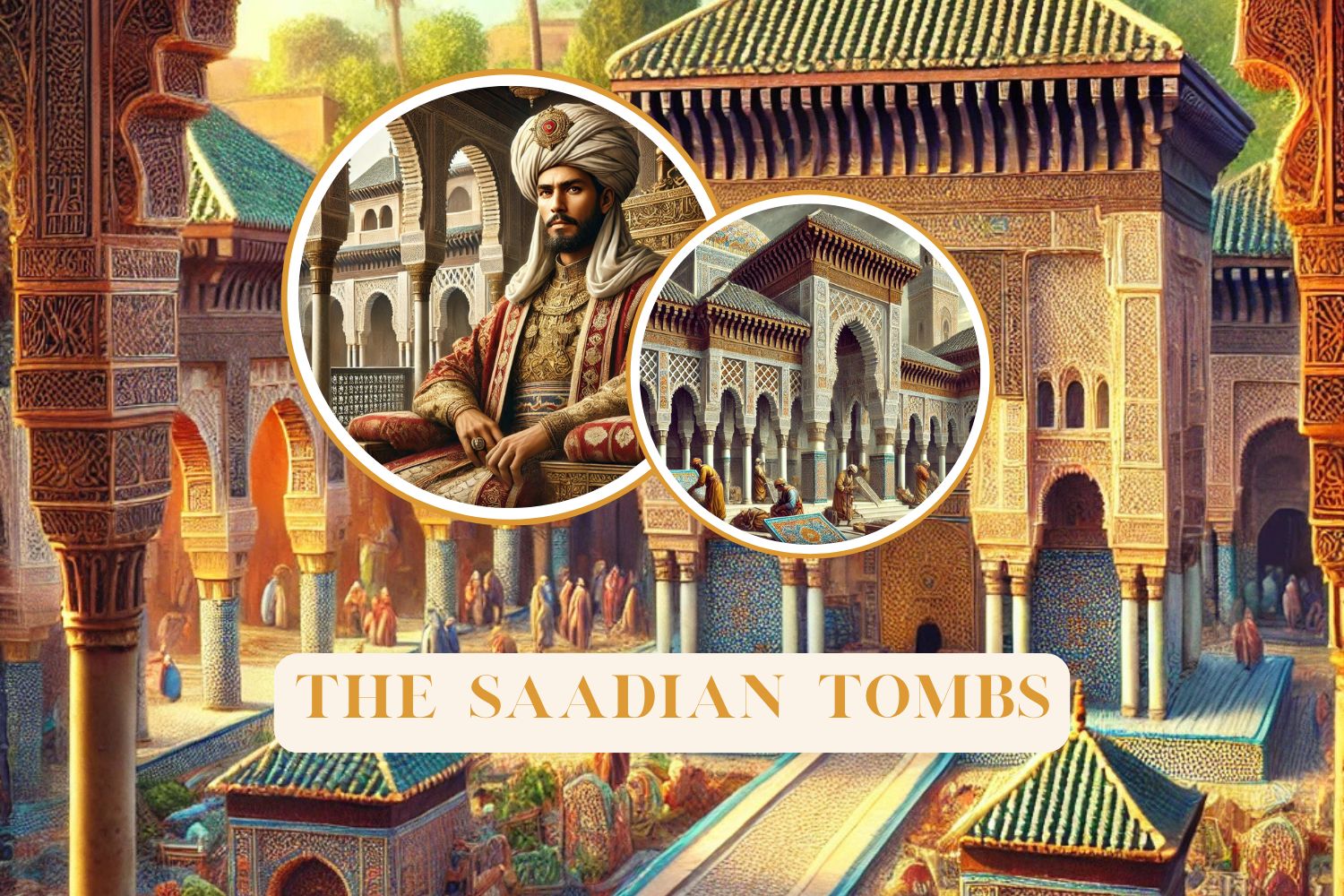
The Saadian Dynasty: A Brief History
The Saadian dynasty ruled over much of Morocco from the mid-16th to the 17th century, establishing their capital in Marrakech. The dynasty was founded by Sultan Mohammed ash-Sheikh, and its most prominent ruler was Ahmed al-Mansur, who presided over the “Golden Age” of Morocco. The Saadians are remembered for their military victories, economic prosperity, and monumental construction projects.
The Saadians were particularly noted for their confrontation with the Portuguese and their victory at the Battle of the Three Kings in 1578, which significantly boosted their power. Under their rule, Marrakech became a cultural and commercial hub, and they constructed numerous palaces, mosques, and gardens. The tombs were one of their most lasting contributions, intended to serve as a burial place for the royal family.
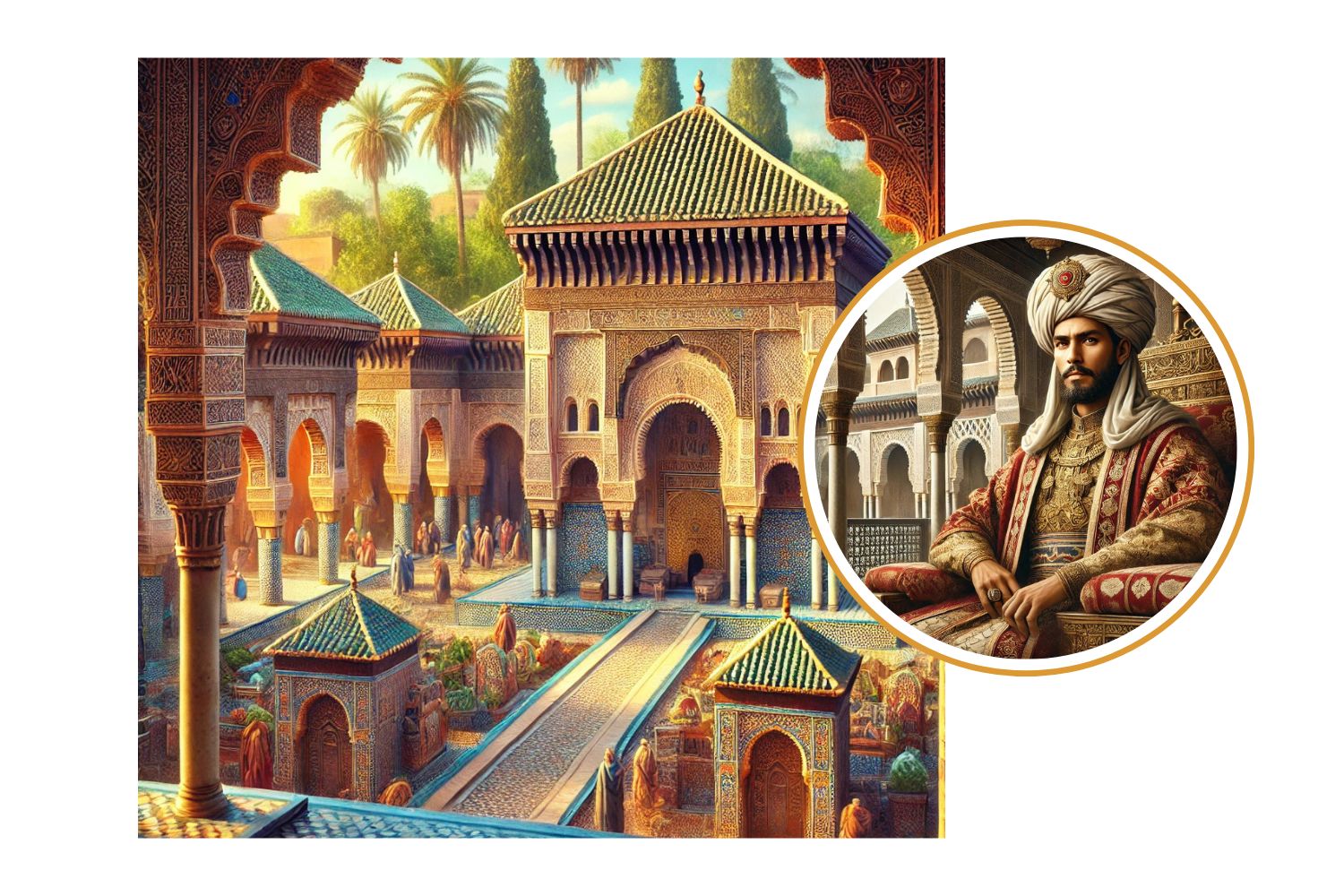
The Construction of the Saadian Tombs
The Saadian Tombs were commissioned by Sultan Ahmed al-Mansur during his reign (1578–1603). He built the Royal Necropolis to honor his family and dynasty, creating a majestic resting place for himself and his descendants. The necropolis, located next to the Kasbah Mosque, was intended to showcase the grandeur and power of the Saadian dynasty.
The tombs were constructed with traditional Moroccan craftsmanship, featuring zellij tilework, stucco, and marble columns imported from Carrara, Italy. The artisans used geometric patterns and floral motifs, typical of Islamic architecture, to create an intricate and refined aesthetic. The mausoleum is divided into two main chambers, including the Hall of Twelve Columns, considered the architectural masterpiece of the complex.
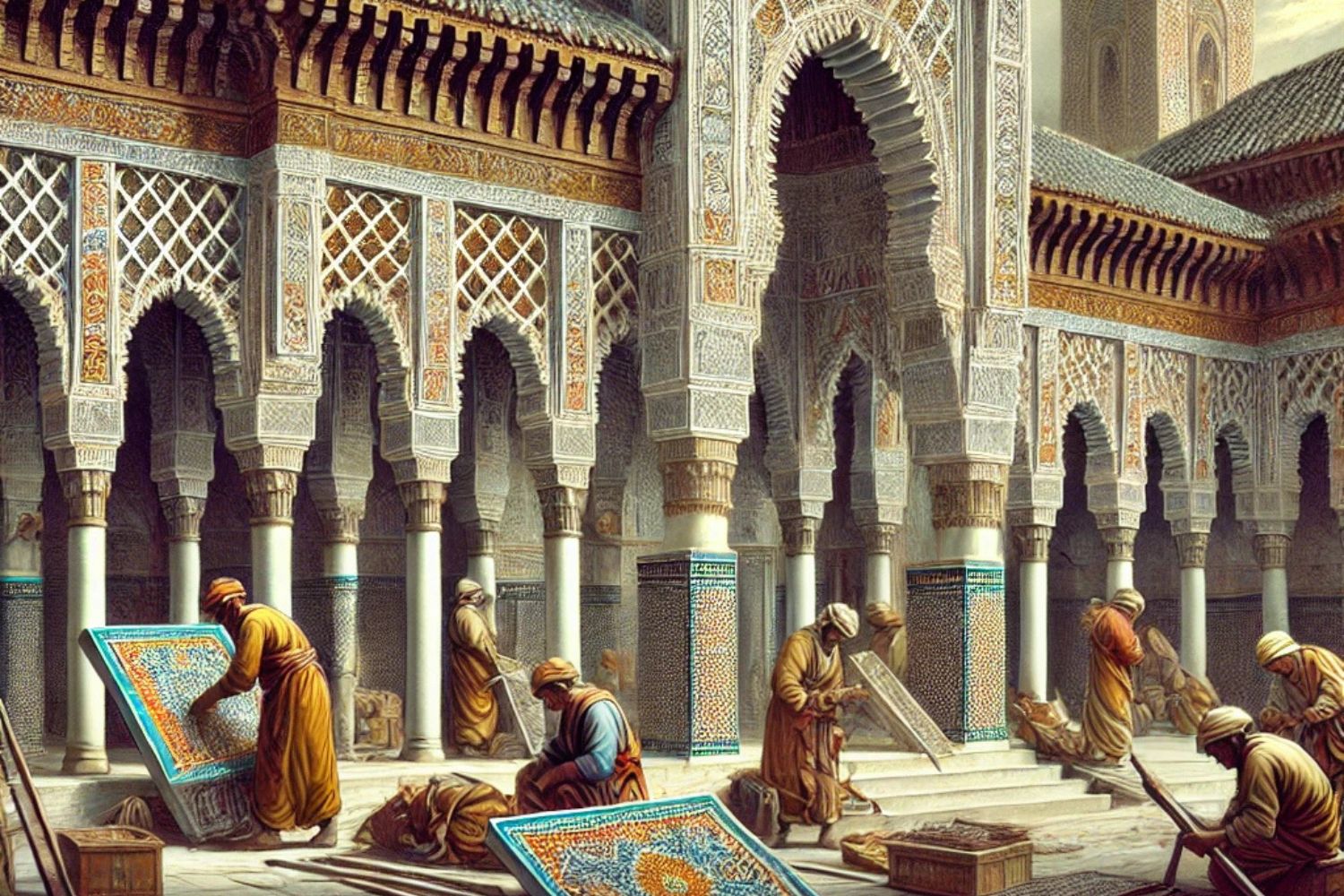
Key Features of the Saadian Tombs
The Saadian Tombs are known for their remarkable Moorish architecture and elaborate design. Key features of the tombs include:
The Hall of Twelve Columns
This is the most significant chamber within the Saadian Tombs and serves as the resting place of Ahmed al-Mansur and his immediate family members. It is named after the twelve marble columns that support its intricate ceiling. The hall is adorned with elaborate stucco work, intricate zellij tiling, and a cupola ceiling. The tombs within this chamber are covered in Italian marble, a luxury that reflected the wealth and power of the Saadian dynasty.
The Garden and Open Air Tombs
Surrounding the central mausoleum is a garden where more than 100 tombs of Saadian princes, noblemen, and soldiers are located. These tombs are covered with polychrome tiles, and while they are simpler in design compared to the royal chamber, they add to the overall grandeur of the site. The garden is peaceful and serene, offering a contrast to the intricacies of the mausoleum interiors.
The Mausoleum of Lalla Messaouda
This section of the tombs is dedicated to Lalla Messaouda, the mother of Ahmed al-Mansur. Her tomb is located in a separate chamber, surrounded by other family members. Like the other chambers, it features a mix of Islamic art and architecture, with intricate detailing on every surface.
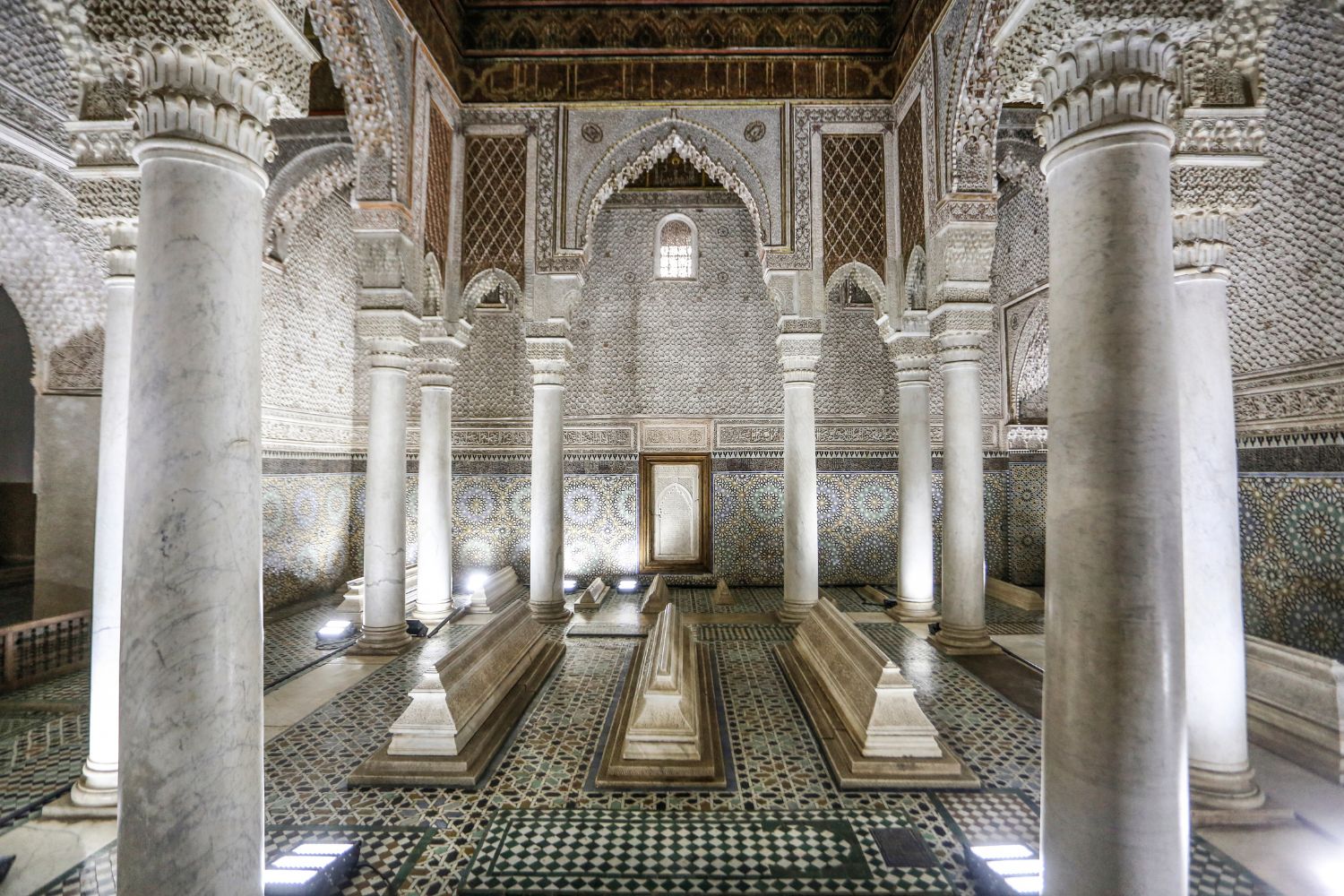
The Fall of the Saadian Dynasty and the Sealing of the Tombs
After the death of Ahmed al-Mansur in 1603, the Saadian dynasty experienced internal strife and political decline. In 1659, the dynasty fell, and the succeeding Alaouite dynasty took power. The new sultan, Moulay Ismail, sought to erase the memory of the Saadians by destroying many of their buildings and monuments. However, instead of destroying the tombs, he ordered them to be sealed off, perhaps due to a combination of superstition and respect for the sanctity of the dead.
For more than 200 years, the Saadian Tombs remained hidden, walled off from the public and largely forgotten. Only the locals knew of their existence, and they remained a secret for generations.
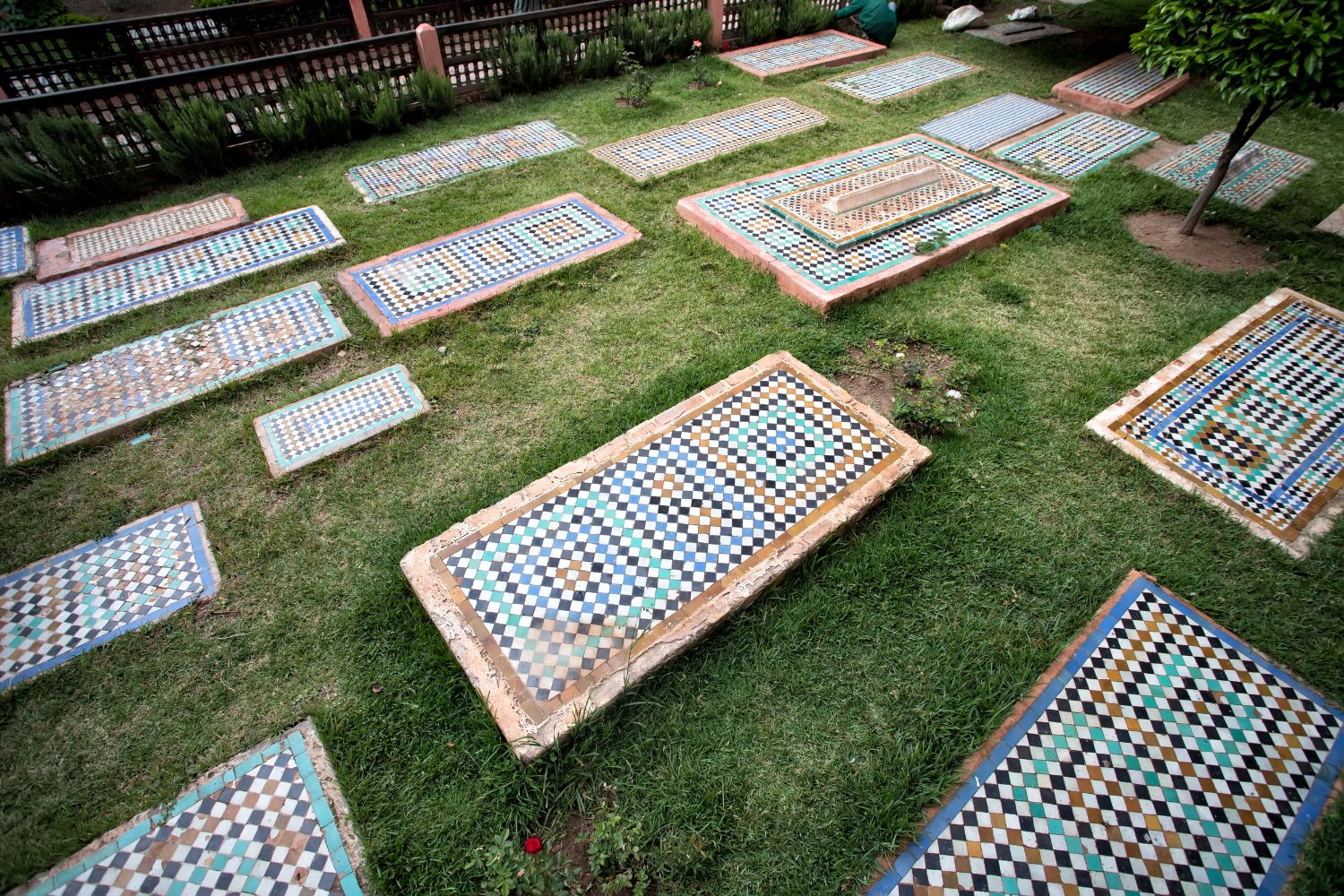
Rediscovery in 1917
The Saadian Tombs were rediscovered in 1917 by French colonial authorities, who were conducting aerial surveys over Marrakech. The tombs were found sealed behind walls, untouched for centuries. Once rediscovered, the tombs were restored to their former glory under the supervision of the Service des Beaux-Arts.
Since their rediscovery, the Saadian Tombs have become one of Marrakech’s most popular attractions. Visitors are drawn to the site not only for its historical importance but also for its breathtaking beauty. The preservation of the tombs allows modern-day visitors to experience the rich history and culture of the Saadian era.
The Legacy of the Saadian Tombs
Today, the Saadian Tombs are considered one of the best-preserved historical sites in Marrakech. They offer a unique glimpse into the royal life of the Saadians and the architectural style of the time. Their elaborate design reflects the wealth and power of the Saadian dynasty, and their rediscovery has preserved an important chapter in Moroccan history.
The site serves as a reminder of the Saadians’ contributions to Moroccan culture, particularly in the areas of architecture, art, and governance. The tombs, with their serene gardens and magnificent halls, continue to inspire awe in visitors, reminding them of the grandeur of a bygone era.
Conclusion
The Saadian Tombs represent not only a place of rest for the royal family but also a rich piece of Moroccan heritage. The grandeur of the tombs, with their intricate tilework and architecture, is a reflection of the Saadian dynasty’s golden age. The tombs’ rediscovery in the 20th century brought to light a forgotten chapter of Moroccan history, allowing future generations to connect with the country’s past. Today, the Saadian Tombs stand as one of Marrakech’s most iconic landmarks, offering visitors a glimpse into the artistic and cultural achievements of the Saadian rulers.